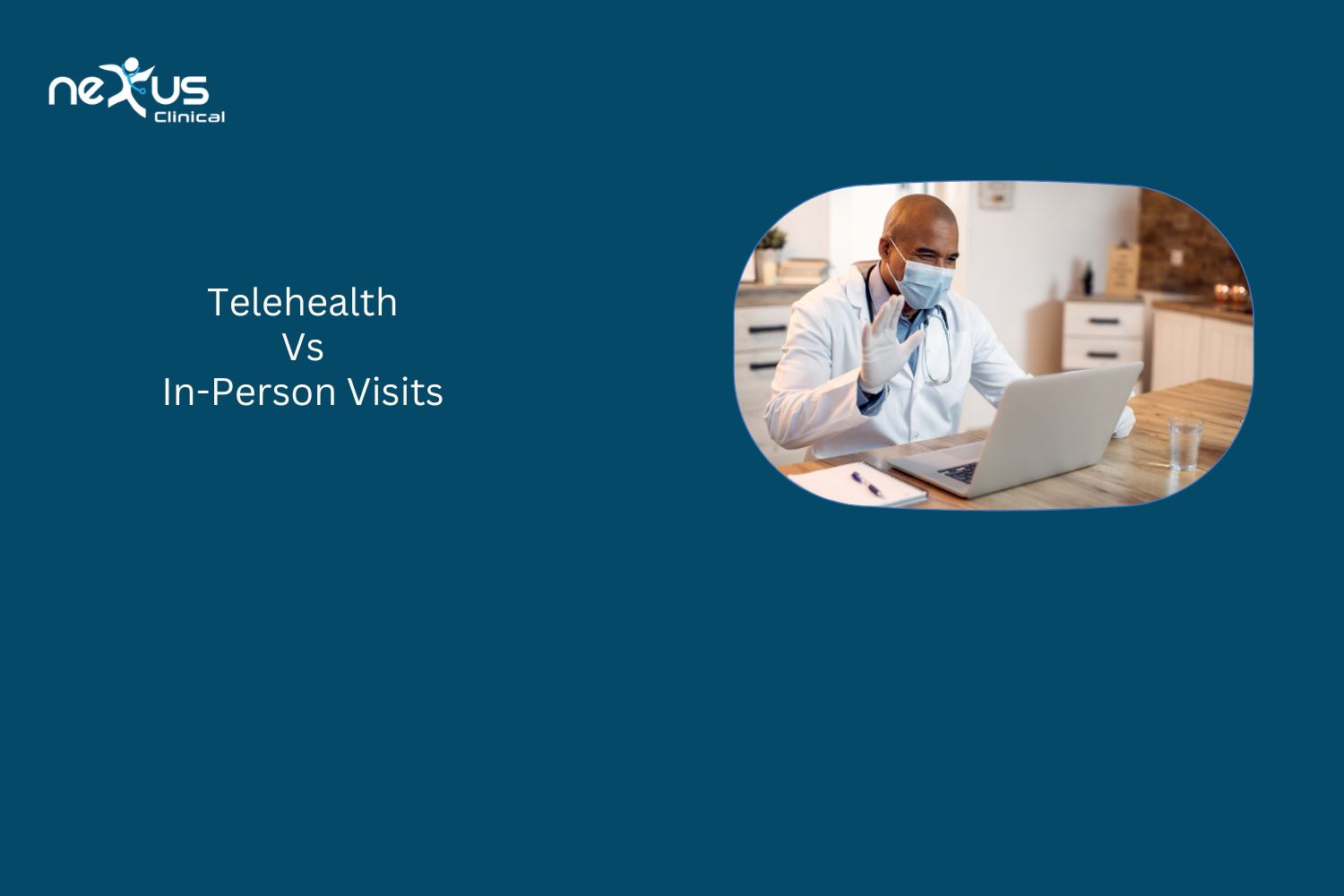
The healthcare industry has undergone significant transformation in recent years, with telemedicine emerging as a significant game-changer. Telehealth is a form of healthcare delivery that has proven to be effective in many instances. While telehealth has great potential, it is not a one-size-fits-all solution for all patients. Patients should be given the choice to select what best suits their needs. Both telehealth and in-person visits have their unique benefits and drawbacks that patients must weigh before making a decision. In this blog, we will delve deeper into the pros and cons of both telehealth and in-person visits and why patients should have the choice.
The Coronavirus pandemic has triggered a rapid shift towards the increased use of telehealth technology to provide medical care, including mental health services. However many still believe that in-person consultations with mental health professionals are a better option. So, the question arises, should mental health patients be given the choice of telehealth vs. in-person visits? The answer is yes, and in this blog, we’ll discuss the benefits of offering this choice.
Telehealth
Telehealth is a convenient and efficient way to access healthcare, particularly for those living in rural or remote areas. Patients can receive medical care from their provider without physically visiting the office. This is especially beneficial for people who have mobility difficulties, such as the disabled or elderly, as they can receive medical care from their homes. Additionally, telehealth provides a cheaper healthcare option. Patients do not incur costs such as transportation, lodging, and time off work. Telehealth also offers a fast turnaround time. Patients can receive medical care quicker, with no waiting time for appointments. However, not all medical conditions are appropriate for telehealth, and some patients may not require it.
In-Person Visits
While telehealth has its benefits, In-person visits have advantages as well. A physical consultation is still the best option for some medical conditions. In some cases, a healthcare provider may need to conduct a physical examination to diagnose and treat medical conditions. In-person consultations also provide personalized care. Healthcare providers can observe patients’ nonverbal communication and engage in more significant conversations. The patient also receives individual attention, which enhances the doctor-patient relationship. Besides, in-person visits may help prevent medical errors. Providers can better understand and diagnose medical conditions when they have a clear view of the issue. Nonetheless, in-person visits may be challenging for some people, particularly for those living in remote areas or with mobility difficulties.
Specialties more likely to be affected
Medical specialties that don’t require physical inspection are inclined to opt towards offering Telehealth services for all the favorable reasons for both clinicians and patients. Nexus Clinical provides specialty-based Nexus EHR embedded with a Telehealth module to cater to specialties like Psychiatry, Mental health, Behavioral health, Psychology, Obesity and weight management, Nutrition and lifestyle management, etc.
Convenience and Accessibility
One of the most significant benefits of using telehealth technology is convenience. Patients no longer have to endure long waiting times, travel distances, or take time off work to attend appointments. It is also more accommodating to patients with physical disabilities or conditions that make travel difficult or impossible. Telehealth can increase accessibility to mental health care, providing a wider range of options for those who live in remote or rural areas.
Less Stigma Associated with Telehealth
Mental health conditions can come with a lot of stigmas. Visiting a mental health clinic can often feel intimidating or embarrassing. Patients may be hesitant to go to a physical clinic due to fear of stigma or judgment. Telehealth removes this barrier by providing a more discreet and confidential means of communication with mental health professionals.
Comfort and Familiarity
For some patients, being in their homes or familiar environments may be more comfortable than attending appointments in clinical settings. They may also feel more relaxed and better able to open up from the privacy of their home.
Saving Time and Money
Telehealth saves both patients and healthcare providers time and money. No travel time means fewer missed appointments and less time away from work. Additionally, telehealth technologies typically cost less for patients, leading to reduced healthcare costs overall.
More Consistent Care
Offering telehealth also ensures better continuity of care. Patients who struggle with mental illnesses may miss appointments or lose motivation to attend treatment. Having the option of telehealth appointments means patients can stick to their treatment plan and receive the necessary care.
Attendance
Appointment non-attendance is associated with poorer clinical outcomes, suboptimal resource utilization, and lost revenue. Telehealth visits—herein referring to synchronous audio-only or audio-video episodes of care between patients and clinicians for acute, chronic, or preventive care—may alleviate barriers to attendance such as distance, travel time, need for caregiving support, time off from work, or other competing commitments. However, they may not address other reasons for non-attendance and may introduce new barriers related to technology access and literacy.
Cost
Cost is one of the significant factors to consider when selecting between telehealth and in-person visits. Telehealth is more affordable than in-person medical consultations. For instance, telehealth eliminates expenses such as transportation, parking fees, and other costs associated with medical visits. Additionally, telehealth helps save time, resulting in fewer missed hours of work. Besides, telehealth eliminates the need for babysitters, which can be costly. In-person visits, on the other hand, are more expensive, with many associated costs.
Privacy
Privacy is one of the critical concerns that patients consider when choosing between telehealth and in-person visits. Telehealth offers greater privacy as patients can receive care from the comfort of their homes. Besides, appointments are conducted over secure audio and video links. In-person visits, on the other hand, offer less privacy. For instance, patients must wait in a public waiting room before consultations, which can be an uncomfortable experience. Besides, as patients physically travel for appointments, their movements can be tracked, which may result in privacy concerns.
Conclusion:
To conclude, telehealth and in-person visits offer unique benefits and drawbacks. Whether to consider telehealth or in-person visits is dependent on the patient’s healthcare needs, availability, and location. Patients should have the option to choose what bests suits their needs. Telehealth can be an excellent alternative for some patients, while others may still require in-person visits. Healthcare providers must offer access to both forms of care while ensuring privacy, convenience, and quality. As healthcare becomes more patient-centered, telehealth will likely continue to be at the forefront of healthcare delivery.
Switching to Telehealth offers multiple benefits to mental health patients, including convenience, accessibility, less stigma, comfort and familiarity, saving time and money, and providing more consistent care. By offering patients the choice of telehealth or in-person appointments, healthcare providers and mental health professionals provide a more inclusive and personalized healthcare experience. Telehealth services offer a unique avenue for care and treatment, and it should be encouraged about mental health patients.






